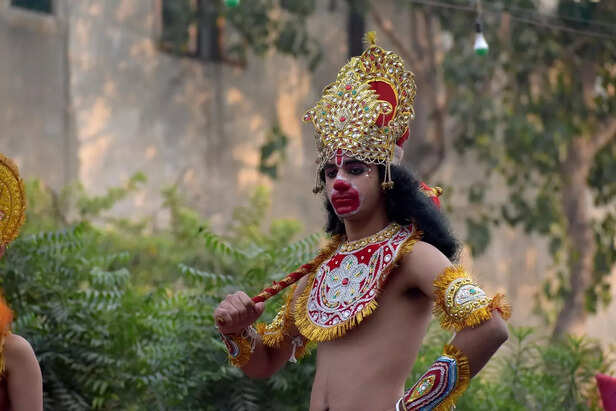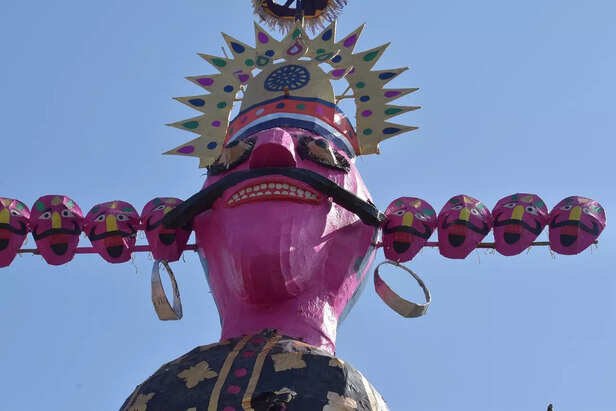
rama
( Image credit : Pixabay )
For most Indians, Ramayana is not just an epic—it’s an emotional compass, a moral guide, and a living tradition. But what if we told you that traces of this ancient tale still echo across the landscape of India? From the dense forests of Chitrakoot to the southern shores of Rameswaram, many places across the country claim to have witnessed moments from Lord Rama’s legendary journey. Whether you're a believer or simply a lover of myth and history, these places offer a powerful connection between storytelling and sacred geography.
Let’s walk through these timeless locations that bridge mythology with memory.
1. Ayodhya, Uttar Pradesh – The Birthplace of
Ayodhya is not just a city; it’s the beating heart of the Ramayana. According to tradition, this is where Lord Rama was born and raised, the capital of the Kosala kingdom. With the construction of the grand Ram Mandir, the city has once again become a spiritual magnet for pilgrims and tourists alike. The Saryu riverbanks, Ram Janmabhoomi, and Hanuman Garhi are some of the spots that breathe life into the ancient tale.
2. Chitrakoot, Madhya Pradesh & Uttar Pradesh – The Forest That Sheltered Divinity
Straddling the border of UP and MP, Chitrakoot is believed to be the place where Rama, Sita, and Lakshmana spent a large part of their 14-year exile. It’s here that Bharata came to plead Rama to return to Ayodhya. The serene forests and hills still carry names like Kamadgiri and Bharat Milap, tying the myth to the landscape. Devotees often trek to these spots, not just to worship, but to feel history pulse beneath their feet.
3. Panchvati, Nashik, Maharashtra – The Turning Point of the Epic
Located on the banks of the Godavari River, Panchvati is where the trio settled during a crucial phase of their exile. The caves at Sita Gufa are said to be where Sita lived, and the area is also linked to the golden deer episode and her eventual abduction by Ravana. Nashik’s name itself is said to come from Nasika, referring to the incident where Lakshmana cut off the nose (nasika) of Surpanakha.
4. Kishkindha, Hampi, Karnataka – The Kingdom of the Vanaras
The ruined yet majestic landscape of Hampi is believed by many to be the ancient Kishkindha—the monkey kingdom ruled by Sugriva and Hanuman. The Anjaneya Hill, said to be Hanuman’s birthplace, and Rishyamukha mountain, where Rama first met Hanuman, are key markers. Standing amid the rocky terrain of Hampi, it’s not hard to imagine the vanaras leaping across boulders and building alliances of divine proportion.
5. Rameswaram, Tamil Nadu – Where Devotion Meets the Sea
Few places blend devotion, nature, and mythology the way Rameswaram does. It’s from here that Rama is believed to have built the legendary bridge to Lanka with the help of his vanara army. The Ramanathaswamy Temple here is one of the twelve Jyotirlingas and holds immense significance because Rama is said to have prayed to Shiva here after the war. Floating stones, believed by locals to be remnants of the Ram Setu, still draw curiosity and wonder.
6. Lepakshi, Andhra Pradesh – Where Jatayu Fell
In the small town of Lepakshi in Andhra Pradesh, there’s a temple with a large sculpture of a dying bird—believed to be Jatayu. According to the Ramayana, it was here that the mighty bird tried to rescue Sita from Ravana’s clutches and fell after a valiant fight. Even the name “Le Pakshi” is said to derive from Rama's words to the bird: “Le Pakshi!” (Rise, bird!). The temple's architecture, murals, and local legends all bear testimony to this link.
7. Dandakaranya Forest, Chhattisgarh – A Land of Exile and Echoes
This dense forest region is believed to be part of the Dandakaranya mentioned in the Ramayana, where Rama spent several years in exile and encountered sages, demons, and divine beings. Modern-day Bastar, Jagdalpur, and surrounding areas are said to be part of this mystical forest. Even today, tribal communities here maintain oral traditions that echo stories of Rama’s travels.
8. Bhadrachalam, Telangana – The Temple Built on Devotion
Although not directly mentioned in the Valmiki Ramayana, Bhadrachalam holds a special place in the hearts of devotees. It is believed that Rama appeared in a dream to a devotee named Kancharla Gopanna (popularly known as Bhakta Ramadasu), instructing him to build a temple. The place is also believed to be where Rama crossed the Godavari River during exile.
9. Rameswaram to Dhanushkodi – The Mythic Bridge
Stretching into the sea, the remnants of a coral reef and limestone shoals between India and Sri Lanka are believed to be parts of the Ram Setu or Adam’s Bridge. While geologists see it as a natural formation, for many believers, it’s physical evidence of the vanara army’s engineering marvel. Dhanushkodi, now a ghost town after a cyclone, still draws pilgrims who look out over the sea and imagine Rama’s army marching to Lanka.
Why These Places Matter Even Today
It’s easy to brush off these sites as “myths written into maps.” But even in an age of satellites and skyscrapers, these places offer something that goes beyond GPS coordinates—they offer faith, continuity, and identity. Whether or not every episode of the Ramayana took place exactly as described, these sites allow generations to connect with something deeper, older, and emotionally rooted.
Walking with Rama

ravana
( Image credit : Pixabay )
Traveling to these places isn’t just tourism—it’s a pilgrimage through time, culture, and personal belief. For millions, the Ramayana isn’t just a story that happened once upon a time—it’s a story that continues to unfold, lived in shrines, whispered in prayers, and carved into the land.
So next time you hear the name “Ramayana,” remember: it might be a story from the past, but its footsteps are all around us even now.
Explore the latest trends and tips in
Health & Fitness,
Travel,
Life Hacks,
Fashion & Beauty, and
Relationships at
Times Life! 

